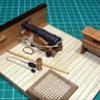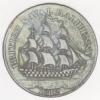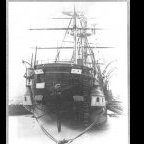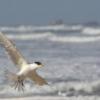HOLIDAY DONATION DRIVE - SUPPORT MSW - DO YOUR PART TO KEEP THIS GREAT FORUM GOING! (Only 24 donations so far out of 49,000 members - C'mon guys!)
×
-
Posts
5,937 -
Joined
-
Last visited
Reputation Activity
-
 BANYAN got a reaction from Harvey Golden in Interesting ship related book with interesting signature inside
BANYAN got a reaction from Harvey Golden in Interesting ship related book with interesting signature inside
Wow, nice catch.
cheers
Pat
-
 BANYAN got a reaction from thibaultron in Interesting ship related book with interesting signature inside
BANYAN got a reaction from thibaultron in Interesting ship related book with interesting signature inside
Wow, nice catch.
cheers
Pat
-
 BANYAN got a reaction from alde in Interesting ship related book with interesting signature inside
BANYAN got a reaction from alde in Interesting ship related book with interesting signature inside
Wow, nice catch.
cheers
Pat
-
 BANYAN got a reaction from Keith Black in Interesting ship related book with interesting signature inside
BANYAN got a reaction from Keith Black in Interesting ship related book with interesting signature inside
Wow, nice catch.
cheers
Pat
-
 BANYAN got a reaction from druxey in Interesting ship related book with interesting signature inside
BANYAN got a reaction from druxey in Interesting ship related book with interesting signature inside
Wow, nice catch.
cheers
Pat
-
 BANYAN got a reaction from Ryland Craze in Bristol Pilot Cutter by michael mott - 1/8 scale - POF
BANYAN got a reaction from Ryland Craze in Bristol Pilot Cutter by michael mott - 1/8 scale - POF
Great to see you back online here Michael, have been missing your updates. Hope all goes well with your vision and you can find some time to complete the interior of your build.
cheers
Pat
-
 BANYAN reacted to alde in Interesting ship related book with interesting signature inside
BANYAN reacted to alde in Interesting ship related book with interesting signature inside
I just bought this 1910 printing of The Naval War of 1812 by Teddy Roosevelt. It's a cool book but that's not what makes it interesting. Check out who signed it.
I don't think the seller saw any significance to the signature.
-
 BANYAN got a reaction from Glen McGuire in HMCSS Victoria 1855 by BANYAN - 1:72
BANYAN got a reaction from Glen McGuire in HMCSS Victoria 1855 by BANYAN - 1:72
Thanks everyone for the very kind sentiments and encouragement.
@Louie da fly thanks, yep aware of that item, but I really think they have that placarded/identified wrongly. I think it is much too large to have been used onboard. More likely is that it was a swivel link used on the permanent mooring buoy allocated to her in Hobson's Bay. Appreciate the pointer.
cheers
Pat
-
 BANYAN got a reaction from Keith Black in HMCSS Victoria 1855 by BANYAN - 1:72
BANYAN got a reaction from Keith Black in HMCSS Victoria 1855 by BANYAN - 1:72
Thanks everyone for the very kind sentiments and encouragement.
@Louie da fly thanks, yep aware of that item, but I really think they have that placarded/identified wrongly. I think it is much too large to have been used onboard. More likely is that it was a swivel link used on the permanent mooring buoy allocated to her in Hobson's Bay. Appreciate the pointer.
cheers
Pat
-
 BANYAN reacted to Knocklouder in HMCSS Victoria 1855 by BANYAN - 1:72
BANYAN reacted to Knocklouder in HMCSS Victoria 1855 by BANYAN - 1:72
Very glad to hear the good news
Bob M.
-
 BANYAN reacted to Louie da fly in HMCSS Victoria 1855 by BANYAN - 1:72
BANYAN reacted to Louie da fly in HMCSS Victoria 1855 by BANYAN - 1:72
Very good news, Pat. Glad to hear you're ok.
BTW, regarding the Victoria, are you aware there's a small part of its rigging preserved in a park in Queenscliff? A swivel joint, if I recall correctly.
Steven
-
 BANYAN reacted to michael mott in Bristol Pilot Cutter by michael mott - 1/8 scale - POF
BANYAN reacted to michael mott in Bristol Pilot Cutter by michael mott - 1/8 scale - POF
Good morning everyone, well it is morning here, thanks for all the kind welcomes. Eyes are settling down, it is strange now having to get used to becoming farsighted after being nearsighted all mi life. my temporary reading glasses from the pharmacy are definitely a help but have to take the off when I look up as things go blurry.
only a few more days before I can start working in the workshop .
Michael
-
 BANYAN got a reaction from CDR_Ret in HMCSS Victoria 1855 by BANYAN - 1:72
BANYAN got a reaction from CDR_Ret in HMCSS Victoria 1855 by BANYAN - 1:72
Very many thanks to all for your very kind messages. The medical team was great, I was up and about that evening (after a four hour procedure), eating normally and getting about the next day, and released from hospital the next. It never ceases to amaze me what these health 'magicians' can do these days.
The intention is to now prove my rigging plan by trying it on the model. This should help to resolve some of the remaining issues I have and establish whether some of the leads etc I have used were/are practical. This is not to say the plan is the 'actual' configuration used in the ship itself, but this process should lead to a reasonable 'representative' rigging and belaying plan.
Once I start, I encourage you all, especially the more experienced modellers and mariners, to challenge my assumptions.
In the interim I am preparing myself for the onslaught of Christmas, especially with my three gorgeous granddaughters (or should I call them 'organised chaos' '
cheers
Pat
-
 BANYAN got a reaction from Keith Black in Bristol Pilot Cutter by michael mott - 1/8 scale - POF
BANYAN got a reaction from Keith Black in Bristol Pilot Cutter by michael mott - 1/8 scale - POF
Great to see you back online here Michael, have been missing your updates. Hope all goes well with your vision and you can find some time to complete the interior of your build.
cheers
Pat
-
 BANYAN got a reaction from Glen McGuire in HMCSS Victoria 1855 by BANYAN - 1:72
BANYAN got a reaction from Glen McGuire in HMCSS Victoria 1855 by BANYAN - 1:72
Very many thanks to all for your very kind messages. The medical team was great, I was up and about that evening (after a four hour procedure), eating normally and getting about the next day, and released from hospital the next. It never ceases to amaze me what these health 'magicians' can do these days.
The intention is to now prove my rigging plan by trying it on the model. This should help to resolve some of the remaining issues I have and establish whether some of the leads etc I have used were/are practical. This is not to say the plan is the 'actual' configuration used in the ship itself, but this process should lead to a reasonable 'representative' rigging and belaying plan.
Once I start, I encourage you all, especially the more experienced modellers and mariners, to challenge my assumptions.
In the interim I am preparing myself for the onslaught of Christmas, especially with my three gorgeous granddaughters (or should I call them 'organised chaos' '
cheers
Pat
-
 BANYAN got a reaction from bruce d in HMCSS Victoria 1855 by BANYAN - 1:72
BANYAN got a reaction from bruce d in HMCSS Victoria 1855 by BANYAN - 1:72
Very many thanks to all for your very kind messages. The medical team was great, I was up and about that evening (after a four hour procedure), eating normally and getting about the next day, and released from hospital the next. It never ceases to amaze me what these health 'magicians' can do these days.
The intention is to now prove my rigging plan by trying it on the model. This should help to resolve some of the remaining issues I have and establish whether some of the leads etc I have used were/are practical. This is not to say the plan is the 'actual' configuration used in the ship itself, but this process should lead to a reasonable 'representative' rigging and belaying plan.
Once I start, I encourage you all, especially the more experienced modellers and mariners, to challenge my assumptions.
In the interim I am preparing myself for the onslaught of Christmas, especially with my three gorgeous granddaughters (or should I call them 'organised chaos' '
cheers
Pat
-
 BANYAN got a reaction from Jim Lad in HMCSS Victoria 1855 by BANYAN - 1:72
BANYAN got a reaction from Jim Lad in HMCSS Victoria 1855 by BANYAN - 1:72
Very many thanks to all for your very kind messages. The medical team was great, I was up and about that evening (after a four hour procedure), eating normally and getting about the next day, and released from hospital the next. It never ceases to amaze me what these health 'magicians' can do these days.
The intention is to now prove my rigging plan by trying it on the model. This should help to resolve some of the remaining issues I have and establish whether some of the leads etc I have used were/are practical. This is not to say the plan is the 'actual' configuration used in the ship itself, but this process should lead to a reasonable 'representative' rigging and belaying plan.
Once I start, I encourage you all, especially the more experienced modellers and mariners, to challenge my assumptions.
In the interim I am preparing myself for the onslaught of Christmas, especially with my three gorgeous granddaughters (or should I call them 'organised chaos' '
cheers
Pat
-
 BANYAN got a reaction from Keith Black in HMCSS Victoria 1855 by BANYAN - 1:72
BANYAN got a reaction from Keith Black in HMCSS Victoria 1855 by BANYAN - 1:72
Very many thanks to all for your very kind messages. The medical team was great, I was up and about that evening (after a four hour procedure), eating normally and getting about the next day, and released from hospital the next. It never ceases to amaze me what these health 'magicians' can do these days.
The intention is to now prove my rigging plan by trying it on the model. This should help to resolve some of the remaining issues I have and establish whether some of the leads etc I have used were/are practical. This is not to say the plan is the 'actual' configuration used in the ship itself, but this process should lead to a reasonable 'representative' rigging and belaying plan.
Once I start, I encourage you all, especially the more experienced modellers and mariners, to challenge my assumptions.
In the interim I am preparing myself for the onslaught of Christmas, especially with my three gorgeous granddaughters (or should I call them 'organised chaos' '
cheers
Pat
-
 BANYAN got a reaction from Keith Black in Trireme Olympias by Richard Braithwaite
BANYAN got a reaction from Keith Black in Trireme Olympias by Richard Braithwaite
What a great result Richard, can't wait to see the completed product. Nice work.
cheers
Pat
-
 BANYAN got a reaction from druxey in HMCSS Victoria 1855 by BANYAN - 1:72
BANYAN got a reaction from druxey in HMCSS Victoria 1855 by BANYAN - 1:72
Very many thanks to all for your very kind messages. The medical team was great, I was up and about that evening (after a four hour procedure), eating normally and getting about the next day, and released from hospital the next. It never ceases to amaze me what these health 'magicians' can do these days.
The intention is to now prove my rigging plan by trying it on the model. This should help to resolve some of the remaining issues I have and establish whether some of the leads etc I have used were/are practical. This is not to say the plan is the 'actual' configuration used in the ship itself, but this process should lead to a reasonable 'representative' rigging and belaying plan.
Once I start, I encourage you all, especially the more experienced modellers and mariners, to challenge my assumptions.
In the interim I am preparing myself for the onslaught of Christmas, especially with my three gorgeous granddaughters (or should I call them 'organised chaos' '
cheers
Pat
-
 BANYAN reacted to CDR_Ret in HMCSS Victoria 1855 by BANYAN - 1:72
BANYAN reacted to CDR_Ret in HMCSS Victoria 1855 by BANYAN - 1:72
Good news, Pat. I was wondering whether something had come up. Very glad that you received a clean bill of health.
Don't push your recovery. The model will be there.
Terry
-
 BANYAN reacted to druxey in HMCSS Victoria 1855 by BANYAN - 1:72
BANYAN reacted to druxey in HMCSS Victoria 1855 by BANYAN - 1:72
Glad to see you back and recovered, Pat!
-
 BANYAN reacted to wefalck in HMCSS Victoria 1855 by BANYAN - 1:72
BANYAN reacted to wefalck in HMCSS Victoria 1855 by BANYAN - 1:72
Good to hear, Pat, that the intervention went well and that you are back at the project!
-
 BANYAN reacted to Keith Black in HMCSS Victoria 1855 by BANYAN - 1:72
BANYAN reacted to Keith Black in HMCSS Victoria 1855 by BANYAN - 1:72
That's fantastic news, Pat! And a Merry Christmas to you and yours.
-
 BANYAN reacted to Glen McGuire in HMCSS Victoria 1855 by BANYAN - 1:72
BANYAN reacted to Glen McGuire in HMCSS Victoria 1855 by BANYAN - 1:72
Thanks for the health update, Pat. So glad to hear that you are all clear. Full speed ahead with your Victoria!!










